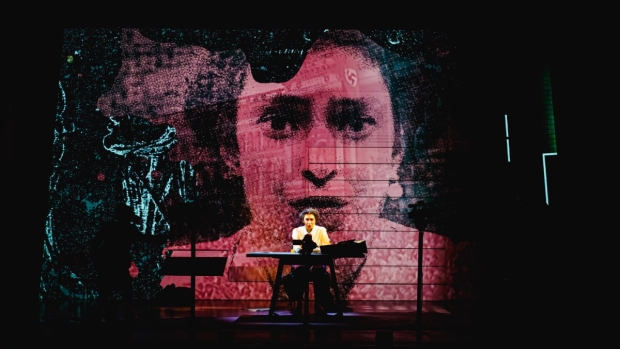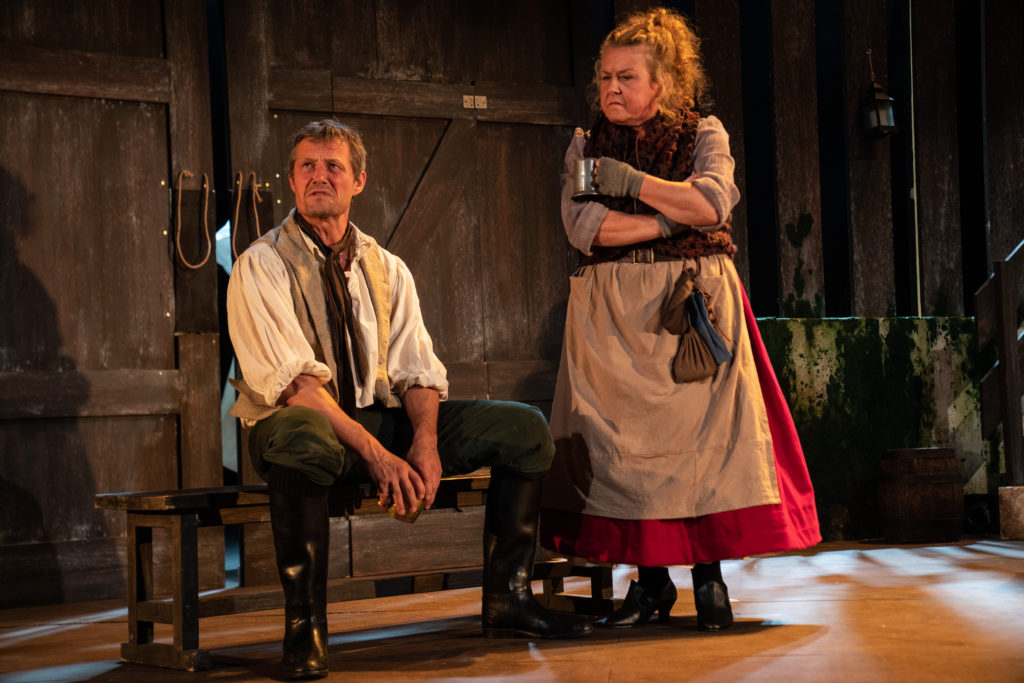
REVIEW: Dracula: The Untold Story, Imitating The Dog/Leeds Playhouse, Courtyard Theatre, Leeds Playhouse, until Saturday, then touring until November 13; The Legend Of Sleepy Hollow, Tilted Wig Productions, York Theatre Royal, until Saturday, then touring into 2022. Box office: Leeds, 0113 213 7700 or at leedsplayhouse.org.uk; York, 01904 623568 or yorktheatreroyal.co.uk
THE horror! The horror! O’ the contrasting horror of two new accounts of vintage horror stories, as re-envisioned respectively by perennially cutting-edge Leeds company Imitating The Dog and Philip Meeks, life-long fan of horror and the weird, prolific playwright and pantomime dame.
Last time out, forever in pursuit of marrying technology and theatre in inventive, ingenious harmony, Imitating The Dog set themselves the digital task of re-creating George A Romero’s cult 1968 Zombie movie Night Of The Living Dead – Remix, frame for frame, on stage and screen in synch with the original footage being shown simultaneously. Breathless, breath-taking, dead brilliant.
From one restless story of the undead to another: the Victorian gothic horror of Dracula, here presented as The Untold Story, the story as re-told from Mina Harker’s viewpoint on New Year’s Eve 1965 at a London police station, as she turns herself in, the last surviving witness of Count Dracula’s destruction 70 years earlier.
Not seen since 1901, she should be 90, but as she confesses to a murder spree over those intervening years, Riane Duce’s Mina looks young, in her 20s. No wonder, Adela Rajnović and Matt Prendergast’s midnight-shift police officers appear so sceptical, even more so when vigilante Mina reveals her supernaturally powered capacity for self-healing and clairvoyance have sustained her through terminating the likes of Mussolini and Hitler before they could wreak their havoc.
All this is delivered with both verbal and visual wit by directors Andrew Quick and Pete Brooks, the outstanding Duce and the multi-role playing Imitating The Dog veterans Rajnovic and Prendergast, with an economy of words to fit into the bubble spaces that graphic novels use.
Ah, the graphic novel: the pop-culture artform that fuels the latest hi-tech innovation of Imitating The Dog’s co-production with Leeds Playhouse. Just as Frank Miller and Robert Rodriguez’s neo-noir thriller Sin City brought the graphic form to cinematic life, so Dracula: The Untold Story is now staged as a live graphic novel cum detective thriller.
Mixed-media theatre took a long time to settle, whether in the pioneering work of Imitating The Dog or York company Pilot Theatre, with words prone to playing second fiddle to the tricksy technology.
Now, however, the sight of actors working cameras on stage, or bending into unusual positions in front of blue screens to appear together, as if by magic, in the graphic novel in motion, no longer has any sense of distraction or gimmickry compromising the live performance.
This is live theatre-making gloriously embracing new possibilities in a constant flow between 2D and 3D, as the cast performs to both camera lens and audience, the visual experience further enhanced by the use of face-recognition technology for the characters being projected on screen.
Dracula: The Untold Story is thrillingly bravura, yet entirely coherent 21st century storytelling, at once pulp fiction in style yet deeply psychological too, still gothic but ultra-modern, humorous yet haunting. Sinking their ever-sharper teeth into Dracula, Imitating The Dog keep on breaking new ground.

Philip Meeks’s The Legend Of Sleepy Hollow is a horror story too, but not of the kind intended. Washington Irving’s gothic story from 1820 runs to only 24 pages and should take the average reader 86 minutes to consume at 250 words per minute. Meeks’s play stretches to over two and a quarter hours, and when town teacher Ichabod Crane (Sam Jackson) mocks the legend for being boring, alas audience heads could be seen nodding in agreement.
At the interval, bewildered expressions were commonplace, as first-night attendees sought mutual guidance as to what was going on, a failing of storytelling amid Meeks’ proliferation of florid words and fanciful ideas.
Neither he nor director Jake Smith has settled on a tone or style, caught in a no man’s land between the earnest, the arch, the knowing, and the quagmire of strangely unfunny schlock-horror comedy ripped from the Hammer House playbook, with sporadic folk-dance stomping and religion-bashing to boot. Imagine a cross between Arthur Miller’s The Crucible and Robin Hardy’s The Wicker Man, topped off with a gay love story.
The acting is uneven; Wendi Peters’ Widow Mariette Papenfuss, with her gobby parrot, surpasses all around her; fellow Coronation Street big-name Bill Ward hams up Baltus Van Tassel; Jackson’s Ichabod is like a man under water forever trying to reach for the surface; Lewis Cope’s buff blacksmith Brom Van Brunt keeps removing his shirt, as if he has escaped from Heathers The Musical; Tommy Sim’aan’s Joost De Groot and Rose Quentin’s Katrina Van Tassel need better material.
Amy Watts’s set design could be a Bruegel painting but feels lifeless by comparison, while you wish for more of Filipe J Carvalho’s illusions amid the overall delusion and want of suspense.
In the desire to be magical and monstrous, spunky and spooky, everything has the feel of running around like a headless horseman, although “running” is not the right word.
“Don’t pass by. Stay Forever,” comes the never-to-be-repeated invitation to Sleepy Hollow. But what is the Legend of Sleepy Hollow? You better ask Philip, although on second thoughts…
